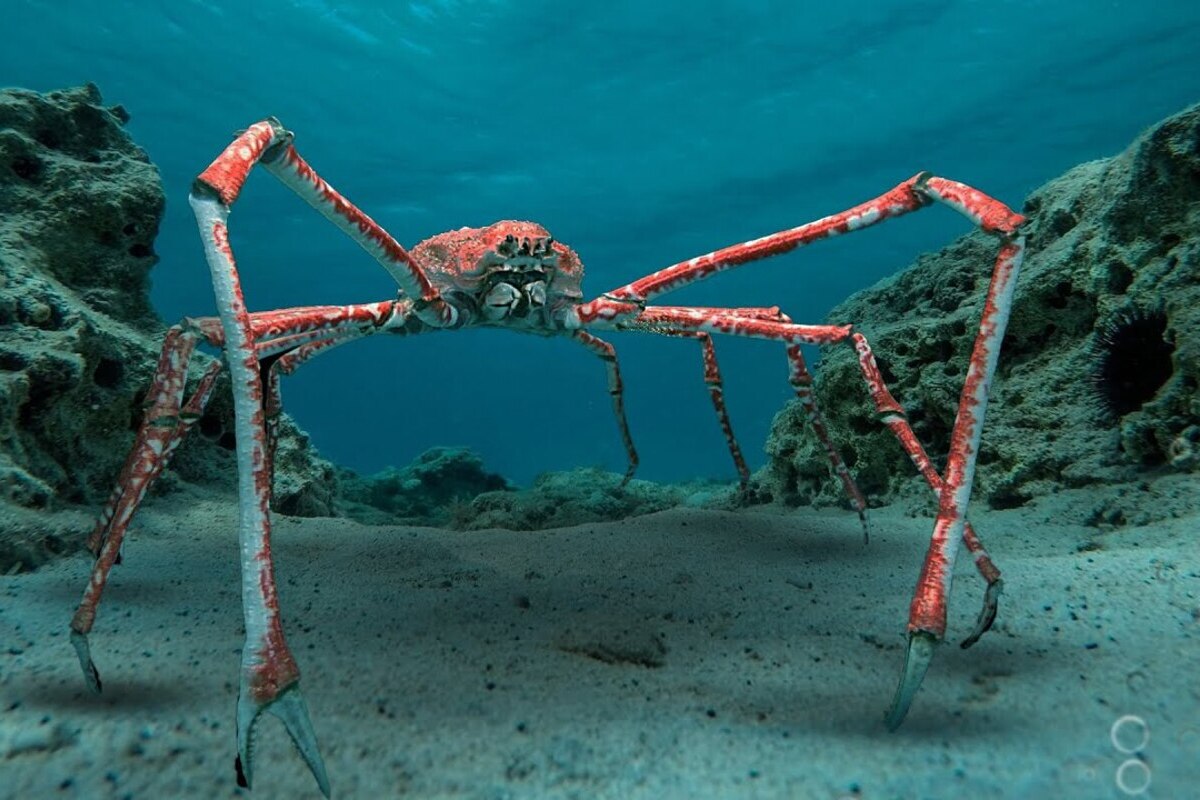Japanese spider crabs are some of the most remarkable creatures dwelling in the depths of the ocean. Their long, spider-like legs and extraordinary appearance often remind people of fantasy monsters, yet they are completely real. These crabs live near the coasts of Japan and attract the attention of scientists, tourists, and even chefs. Despite their intimidating look, they have many fascinating features that you might not have known. In this article, you’ll discover interesting and surprising facts about these unique marine giants.
- The Japanese spider crab is considered the largest arthropod in the world by leg span. Its legs can stretch over 3.5 meters from tip to tip. Meanwhile, the crab’s body is usually no wider than 40 centimeters.
- Despite their fearsome appearance, these crabs have a calm and peaceful nature. They rarely attack and mainly feed on dead sea animals or small invertebrates. This makes them natural scavengers of the ocean floor.
- The scientific name of the Japanese spider crab is Macrocheira kaempferi. They belong to the group of decapod crustaceans, not actual spiders. The term “spider” in their name refers only to their visual similarity.
- These crabs inhabit the waters around the Japanese archipelago, especially near the islands of Honshu and Kyushu in the Pacific Ocean. They are usually found at depths between 150 and 300 meters but can reach as deep as 800 meters. Such depths make it difficult to study their behavior.
- Japanese spider crabs have an impressive lifespan that can reach up to 100 years. They grow slowly and molt throughout their lives, allowing them to regenerate lost limbs. This ability makes them some of the longest-living marine creatures.
- Males are generally larger than females, especially in leg length. Females have shorter legs but a wider body, which is adapted for carrying eggs. This type of sexual dimorphism is common among crustaceans.
- These crabs are capable of camouflaging by attaching algae, sponges, and shell fragments to their carapace. This helps them avoid predators, particularly when they are vulnerable during molting. Camouflage is a vital survival strategy in the deep sea.
- Their main natural predators are octopuses. These intelligent and strong hunters can pierce the crab’s shell and reach the soft tissue inside. To avoid attacks, the crabs often bury themselves in sand or hide among rocks.
- During reproduction, females lay thousands of eggs and attach them to their abdominal legs. They carry the eggs for several weeks until the larvae hatch. The young crabs go through multiple developmental stages before reaching adulthood.
- Although they look frightening, Japanese spider crabs are occasionally used in Japanese cuisine. Their meat is considered a delicacy, but harvesting is limited by strict quotas. Overfishing could threaten their population, so their capture is regulated.
- In aquariums, these crabs are often a major attraction. They are kept in large, chilled tanks that replicate deep-sea conditions. Their unique appearance and slow, graceful movements draw the attention of visitors.
- Due to their size and spider-like legs, these crabs have inspired Japanese myths and folklore. Some ancient stories describe them as ocean spirits or guardians of the deep. Their image also appears in traditional art and modern pop culture.
- Biologists believe that Japanese spider crabs are remnants of an ancient evolutionary line dating back to prehistoric times. Their structure and behavior show traits common to primitive marine life. Studying them helps scientists better understand the evolution of ocean organisms.
These incredible and interesting facts about Japanese spider crabs reveal how extraordinary the underwater world can be. They combine ancient origins, powerful adaptations, and an unforgettable appearance. Every detail of their existence invites curiosity and amazement. The more we learn about them, the more mysteries of the deep ocean are revealed.





